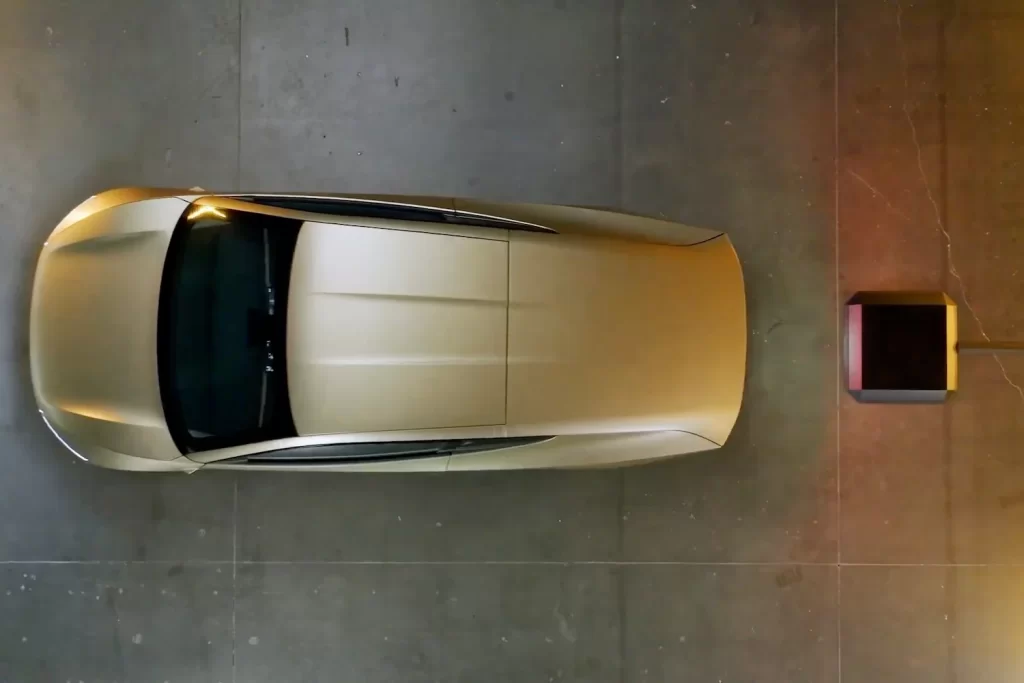In an exciting glimpse into the future of electric vehicle technology, Tesla recently released a teaser video showcasing the potential for wireless charging of its upcoming Cybercab. This brief, 14-second clip has generated considerable buzz, but it leaves many questions unanswered about the practicalities of this innovative charging method.
A Vision of Wireless Charging
During a presentation on October 10, CEO Elon Musk unveiled the long-awaited Cybercab, emphasizing its wireless charging capabilities. Musk stated, “The robotaxi has no plug. It just goes over the inductive charger and charges. So, yeah. It’s kind of how it should be.” This comment hints at a future where vehicles can charge seamlessly without the need for physical connections, which many enthusiasts find appealing.
However, the details surrounding this technology remain scant. Musk did not elaborate on how this inductive charging system would work or the progress Tesla has made in developing it. The teaser video released on October 18 provides a visual representation of what wireless charging could look like for the Cybercab, but it does not delve into the specifics.
What the Teaser Reveals
Robotaxi wireless charging
— Tesla (@Tesla) October 18, 2024
No hands required pic.twitter.com/XL746DkGhb
The concept video displays the Cybercab charging, showing a countdown timer of 56 minutes remaining for a full charge. This has led to speculation about whether this countdown refers to a complete battery charge or merely to a standard level, as Tesla typically caps fast charging at 80% to promote battery longevity.
Throughout the video, the display indicates a 35% charge achieved using a 25 kW input. However, the fully charged screen zooms in on the remaining time, leaving viewers uncertain about the actual charging capacity achieved. This ambiguity might be deliberate; Tesla has a history of releasing teasers for technologies that are still in the conceptual phase. Musk’s past presentations have sometimes included flashy ideas that lacked substance, such as the much-anticipated humanoid robot that was ultimately just a person in a suit.
Efficiency Concerns
One critical aspect of wireless charging technology is its efficiency. Inductive charging can often be less efficient than traditional methods, leading to energy loss during the charging process. An electrical engineer humorously pointed out that charging in an enclosed garage could effectively create a “space heater with extra steps,” as energy wasted through induction might contribute more heat than charge.
While Tesla has hinted at wireless charging before—most notably during a 2023 presentation that featured a seemingly wireless home charger—concrete details have been sparse. The company’s chief designer, Franz von Holzhausen, later confirmed the presence of wireless charging technology, but specifics remained elusive.
The Cybercab’s Road Ahead
Despite the excitement surrounding the Cybercab, several hurdles still lie ahead before it can become a reality. Musk has suggested that the launch could be just 2-3 years away, a timeline that many industry observers believe may be overly optimistic. Regulatory approvals from local governments are a significant obstacle, and Tesla has yet to initiate the necessary processes to operate driverless taxis in key markets like California.
Interestingly, Musk chose to demonstrate the Cybercab at Warner Bros. studios in Burbank, California, rather than on public streets. This controlled environment allowed Tesla to showcase the capabilities of the Cybercab without the complexities of real-world operations, underscoring the challenges that lie ahead.
The Landscape of Wireless Charging
Wireless charging is not a novel concept; other companies have made strides in this area. WiTricity, for instance, has launched pilot programs in Massachusetts and California with Ford’s electric vans, exploring the feasibility of inductive charging technology. Historically, efforts to implement induction charging in roadways have been made, with a trial in Detroit showcasing the potential to charge vehicles while in motion.
However, significant efficiency challenges remain with wireless charging, which has hindered widespread adoption. Current technologies struggle to deliver charging rates that rival those of traditional plug-in methods, leaving the practical implementation of this technology still in question.
Caution and Optimism
While the teaser video presents a sleek vision of the Cybercab’s wireless charging capabilities, it’s essential to approach this announcement with cautious optimism. As with many of Musk’s ambitious projects, the reality often lags behind the concept. The flashy visuals may capture the imagination, but the technical and regulatory challenges ahead will determine whether wireless charging becomes a viable option for Tesla vehicles.
As Tesla continues to innovate and push the boundaries of electric vehicle technology, the introduction of wireless charging could represent a significant leap forward. However, potential buyers and fans alike should temper their enthusiasm until more concrete information emerges about the infrastructure, efficiency, and feasibility of this charging method.
In conclusion, while the idea of wireless charging for the Cybercab is an exciting prospect, much remains to be seen regarding its implementation. The industry is watching closely as Tesla navigates these waters, and only time will reveal whether this ambitious vision can translate into reality. As the landscape of electric vehicles evolves, innovations like wireless charging could play a pivotal role in shaping the future of transportation.

